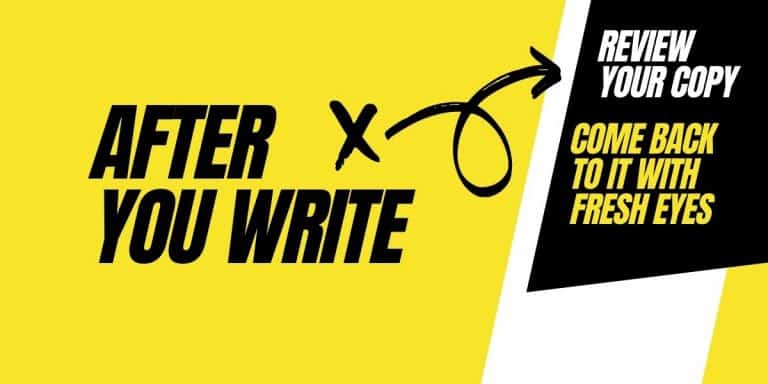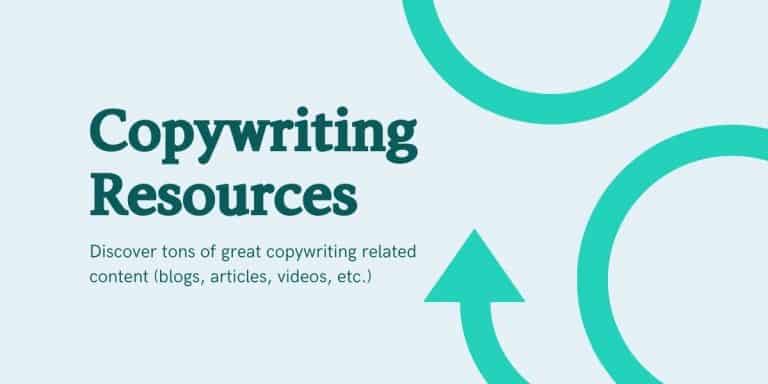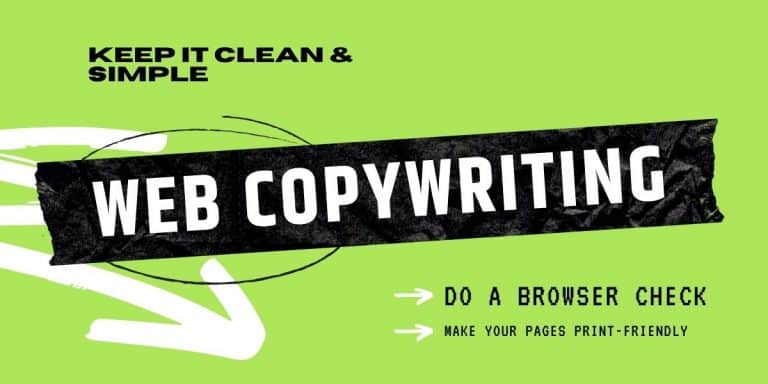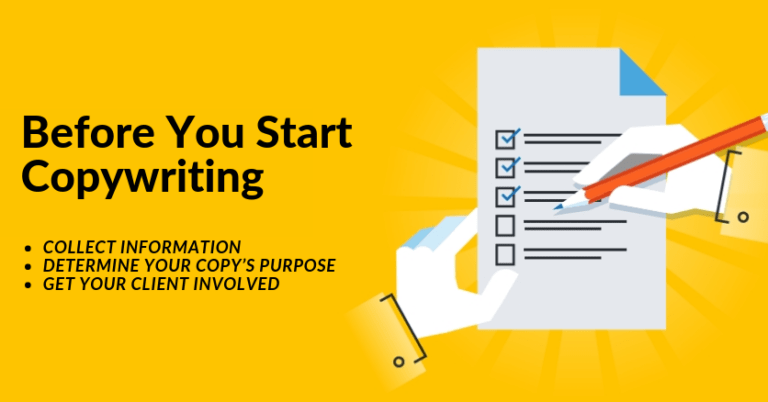The Copywriter’s Mindset
Tap Into Emotions
Sell To Emotion – People buy on emotion and then use logic to justify their decision. Emotional impact is better than statistical impact. Both are important, but facts and figures are secondary to reaching someone on an emotional level.
Appeal To Desires – Understand what emotional element you’re selling:
| You don’t sell a car – you sell recognition You don’t sell insurance – you sell security You don’t sell vitamins – you sell perfect health and energy |
Paint A Vivid Picture – Include words in your copy that involve all 5 senses. People pay attention to anything that stimulates their senses. Include lots of details to make the end-result of using your product crystal clear. Put your reader into the center of the scene.
Create A Virtual Experience – It’s been proven that if a consumer ‘touches’ a product, they instantly get a stronger sense of ownership. Help your reader ‘virtually’ touch and experience your product with the words you write.
Agitate Then Solve – Help the reader vividly imagine the pain of the problem your product solves, then help them feel the pleasure of the solution.
Convey Action – Use action words (running, looking, searching, relaxing, etc.) to help stimulate emotion in your reader.
Tap Into The Desire To Belong – People have a desire to belong to a specific group – people they feel are their peers. This is often what motivates their decisions about what clothes they wear, music they listen to, activities they take part in, and so on. Give your reader a chance to be a part of a group that they want to be part of.
Make Your Offer Sound Exclusive – Use the terms ‘membership’ or ‘members-only privileges’ in relation to your offer. This is an invitation for them to join, while seemingly excluding others.
Use Celebrity – When possible, show how respected, high-profile individuals in the readers desired peer group are using your product.
Appeal To Your Reader’s Fears – Appealing to fears gets results because it paints a picture of a necessary response. Appeal to these fears:
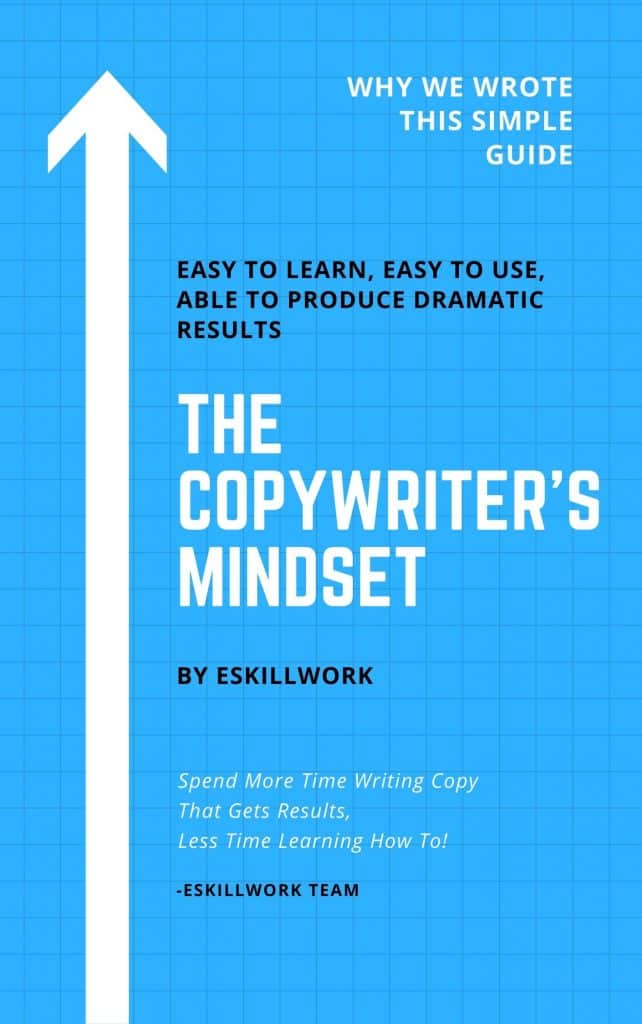
Spend More Time Writing Copy That Gets Results, Less Time Learning How To!
Easy to learn, Easy to use, Able to produce dramatic results
| Failure – Not living up to their full potential; Not experiencing and enjoying the life they could have had. Rejection – Looking like a fool or idiot in the eyes of others for not doing something the ‘right way.’ Physical harm & death – Having to experience something that causes physical pain, or death, either immediately or gradually. Missing an opportunity – Looking back with hindsight and realizing how they may have passed up the opportunity of a lifetime. Loss – Loosing something they currently have and cherish (money, independence, friends, happiness). Things that affect loved ones – Fears related to things that affect loved ones, which is more powerful than fears the reader personally has. For example, saying, “These foods may be destroying your kids’ health” is more emotionally powerful than, “These foods may be destroying YOUR health.” |
Use Curiosity – Humans have a built-in desire to get complete answers. When the brain has a vacancy, it needs to be filled! Use curiosity to suck your reader into your copy, and get them to continue reading:
| Tell them you have a secret – Everyone loves to have something special revealed to them. Make a statement that’s incomplete – “I was about to give up my dream of dancing, and then I discovered something that changed the course of my life…” Use questions, but don’t answer them right away – Our brains love discovering answers to questions, especially if finding the answer only involves reading the rest of the page. Provide valuable information, but only half of it – Tell the reader something valuable, then tell them the action they must take to get the rest of the info (continue reading, enter their email, download a special report, etc.) Use absolutes to create a burning curiosity – Use words such as ‘never’ or ‘always’, as in, “You should NEVER do this with your money – EVER!” Use juxtaposition – Add things together that seemingly don’t belong together. “I had to lose everything before I discovered how rich I was!” |
Use Vanity – Use vanity when your product or service appeals to a characteristic that society considers desirable, such as personal power or physical attractiveness.
Related Searches:
emotional copywriting
Focus On One Idea
Remember That Focus Creates Clarity – Focusing on a single idea in your copy eliminates potential confusion and allows you to connect with your reader at a deeper, and more persuasive level.
Ring The Bell – Occasionally, subtly remind your reader of the idea.
Use AIDA: Attention, Interest, Desire, & Action

Attention
Attract attention to your headline and opening paragraph
Tap into your reader’s emotions
Don’t discuss your product, discuss a sought-after benefit
Make your headline visually stand out
Interest
Use plenty of benefits tied with a lot of emotion
Include subheadlines and lots of scannable bullet points
Let the reader know how you can fulfill their dreams
Talk about the negative results from not taking action
Desire
Touch on the desirable end-benefits that come from getting your product
Paint a vivid picture of the end-result of you’re offer – include plenty of details and appeal to all the senses
Show how your product is the total solution to each one of the reader’s needs
Action
Get the reader to take action now!
Use scarcity – a limited time, a limited number, or a limited offer
Provide valuable bonuses for taking action now
ASK the reader to click the order button (or fill out the order form)
Provide specific instructions about the ordering process – what they will get, when they can expect it, etc.
Related Searches:
aida formula
Use Front-Loading
Understand Why It’s Important – People scan information, starting at the top, or the beginning – tops of pages, tops of bulleted lists, the beginning of sentences, etc. You must put the most important information in these locations.
Front-Load Your Copy Elements – Front-load everything with the most important information at the top, or at the beginning:
| The sales page itself – The top of the page always contains the most important front-loaded element – your headline Paragraphs – Put the most important idea of the paragraph in the first sentence. Sentences – Put the most important words of the sentence at its beginning Bulleted lists – Put the most important bullet point at the top of each bulleted list Words in a bullet point – Grab the reader with the first few words in each bullet point |
Answer ‘What’s In It For Me?’
Answer The ‘Why’ – Your readers are all asking the same question, ‘why?’, and you need to always provide them with a REASON why. Studies have shown that people are more likely to go along with a request if you simply give them a reason why they should, even if the reason you give them makes no sense. Be sure to answer the ‘why’:
| Why are you targeting me with this product or service? Of what benefit is it to me? Why should I listen to, and believe you? What are your credentials? Why was your product or service created? What challenge does it address, and why should I care? Why should I continue reading this? Is this just to sell me something, or am I going to discover something of value? What’s the sense in buying this now? Why are there limited copies, a limited time to order, or a limited offer? Why is your price what it is? What makes you think it’s worth that? |
Lose The ‘I’ – Change ‘I’ statements to ‘you’ statements.
Be Honest And Truthful
Live By A Standard Of Truth – Honesty is ALWAYS the best policy!
Value Truth – Honesty and truth lead to trust, which is one of the most essential ingredients for turning a reader into a customer.
Remember, A Lie Is A Lie – False statements or lies are magnified in peoples’ minds more than truths. Even a little dishonesty can have huge, negative consequences.
Don’t Try To Convince People Of Your Honesty – Never say, “let me be honest with you” (or similar). Whenever you blatantly attempt to convince your audience of a conclusion (‘I’m honest’, ‘I’m funny’, or ‘trust me’) they tend to believe the opposite. It’s as if you’re saying, let me tell this conclusion, because typically, my actions prove otherwise.
Keep It Believable – Make sure your copy sounds believable. This means you should avoid hype and exaggerations of any kind.
If It Sounds Unbelievable, Give Plenty Of Proof – Back up seemingly outrageous statements with plenty of credible proof.
Be Congruent – Make sure the things you say in your copy are congruent, from start to finish. Inconsistencies, even subtle ones, kill trust and credibility.
Make Good On Your Promises – If you make a promise to reveal something in your headline or other parts of your copy, be sure to reveal it.
Honor Your Guarantee – This should go without saying, but you should always honor your guarantee, promptly and pleasantly. Stand behind your promises.
Don’t Lie With Photos – Don’t use stock photos of people within your testimonials, and don’t alter a photo in any way that is deceptive (for example, cropping isn’t usually a deceptive edit) unless you disclose that you have.

Spend More Time Writing Copy That Gets Results, Less Time Learning How To!
Easy to learn, Easy to use, Able to produce dramatic results
Watch Your Words
Strive For Short & Simple – Use shorter, simple words that can express the same meaning as complex words and phrases; use one-syllable words when possible.
Take Out The Fluff – Get rid of unnecessary words like adjectives, adverbs, “in,” etc.
Take It Easy! – Use exclamation points (!) where appropriate, but as little as possible.
Use Emotionally-Appealing Words – Choose words with a similar meaning but more emotional impact:
| Not cost, but investment Not products, but solutions Not house, but home Not deal, but opportunity Not learn, but discover Not buy now, but add to cart |
Use Positive Phrases – Use positive words in place of their negative counterparts when describing your product or service:
| Not inexpensive or cheap, but economical Not free of pesticides, but 100% organic and safe |
Lose The Stuffiness – Use common, informal words in place of their more ‘fancy’ counterparts:
| Not dwelling, but home Not digital device, but gadget |
Replace The Buts – Use and instead of but – use and to focus on a positive:
| Not, “This exercise program works, but you have to make time to follow-through” but, “This exercise program works, and it only takes 20 minutes a day, three times a week “ |
Use Gender-Neutral Terms – Because you’ll likely be writing to both men and women, use gender-neutral terms in order to appeal to both groups:
| Not spokesman, but spokesperson |
Check For Pet Words – Minimize your use of ‘pet words’, or words you tend to overuse. Most modern word processors allow you to run a report that will display the most commonly used words in a document. Run a report and edit your copy where necessary.
Forget The Jargon -Be aware of using jargon that your reader may not understand. If it’s not understood, jargon can create a point of confusion in the reader’s mind, which could lead them to tuning out your message for good!
Convey Confidence – Avoid using tentative adjectives, which suck the conviction out of your copy – things such as, ‘pretty good’, ‘fairly decent’, or ‘quite tasty’. Just say, ‘good’, ‘decent’, or ‘tasty’.
Inject Some Action – Give your copy a sense of movement – use lots of action words.
Avoid Cliches – Using cliches makes your copy seem old, predictable, and unexciting.
Related Searches:
most persuasive words
words that sell list
Use The Most Powerful, Persuasive Words
Include the following words in your copy to make it more persuasive:
Discover – When you tell people they’re going to discover something (as opposed to ‘learning’ it), it triggers a sense of adventure and excitement, as if they’re about to start on a journey to find a hidden treasure.
Easy – People feel their lives are too hard and complicated as it is. When you offer them something that will not only improve their lives, but it’s easy to do, it becomes very desirable.
Guarantee – Most people don’t like being risk-takers. A guarantee goes a long way to eliminating any fears or doubts they may have about taking action on your offer.
Health – If people don’t have their health, very few other things matter. Your reader’s health is of prime importance to them, so anything that can help improve it is something that gets their attention.
Money – In the minds of most people, money represents freedom – freedom to do what they want, when they want to do it. This kind of lifestyle is often a high priority.
New – When something is new, it’s considered fresh, up-to-date, based on new research and technology, and is certainly better than the old thing.
Proven – When something has been proven, it’s shown itself to be reliable, and of high quality.Results – Results are the bottom-line that your reader wants. It’s the main reason they read your copy and buy your product.
Safe – This word brings a sense of comfort and peace of mind.
Save – It’s usually easier for your reader to keep what they already have than it is to make more, so the idea of saving time, money, or anything else, is understood as a way to get results with very little effort.
You – Using this word helps keep the focus on the main beneficiary of the results promised – the reader.
Love – Love is the strongest emotion any of us feel. We crave it, and will do almost anything to experience. It has power!
Free – When something is given as free, it feels like a gift that someone wants to give them – outside the suspicion that comes from asking for something in return.
Own – Owning something implies they have it now, and are using and benefiting from it. This is much better than buying, which implies they’re giving up something (their money) to get it.
Best – There’s nothing higher or better than something that is the best. It conveys the idea that they need nothing else but this.
Tell Stories
Appreciate The Value Of Telling Stories – Readers love stories that are inspirational, informative and easy to share with others. Stories are generally easy to remember, connect with the reader on an emotional level, and help the reader appreciate what’s possible.
Keep Them Short – The longer the story, the greater the chance your reader won’t stick around to finish it. When relating a story, keep it simple, short, and concise.
Focus On A Single Idea – When telling a story, determine the main point or lesson you want to convey, then edit your storytelling in a way that weaves that point or lesson through the story as you tell it.
Include Plenty Of Details – Details bring a story to life and make it more believable. Include details about numbers, dates, days of the week, names, etc.
Appeal To All The Senses – A memorable and emotionally-appealing story is one that taps into as many of the senses as possible. As you tell a story, describe the sensory experience in detail.
Share A Personal Story – The best stories you can tell are usually the ones that have a deep, personal meaning to you. Because it happened to you, sharing the details and emotions that make it a great story comes almost naturally. People will also appreciate how you’re speaking from first-hand experience, which makes what you say more believable.
Related Searches:
storytelling tips – Videos
how to tell a story
Connect With The Reader
Build Trust – The more the reader connects with you, the more they’ll trust you. Trust is KEY! You want to convey: “I’m just like you!”
Become The Reader’s Advocate
Discover Their Source Of Pain – Find out what enemy is making your reader feel powerless, insulted, frustrated and angry. Is it the banks, doctors, drug companies, the tax man?
Discover Their Reason For Pain – Learn what causes the enemy to make your reader angry. Is it because they lie, cheat, or treat them like an ignorant idiot? Are they arrogant, or selfish?
Recognize & Validate Their Feelings – Acknowledge your reader’s frustrations. Validate their sense of powerlessness about the challenge you’re offering to solve.
Get Passionate – Say everything your reader would love to tell the enemy. Get angry, get emotional, get edgy, use emotionally-charged words.
Let Them Know You’re Just Like Them – Tell them that you’ve been in their shoes (if you have) and that you understand where they’re coming from: “I know how you feel.”
Get The Reader Positively Excited – Write so that the reader is nodding their head, maybe even laughing, as they read, realizing how true your words are.
Give Them Relief – Reveal to the reader how your solution will permanently relieve their negative feelings.
Be Conversational
Write In A Voice Your Reader Connects With – Use words and phrases they use, in a language they understand. If you’re selling to farmers, sound like a farmer.
Remember That Grammar Is Secondary – Perfect grammar is not important – a good rhythm and flow to your copy is. Don’t be afraid to do things that are generally considered grammar no-no’s, if it makes your copy more conversational.
Use Contractions – It’s better to use ‘don’t’ than it is to use ‘do not’. Using contractions make your copy sound more conversational.
Make It Intimate – Write as if you’re writing to one person – a friend, not many.
Focus On The Reader – Avoid using ‘I’ and ‘we’ as much as possible. Use ‘you’ instead, and use it a lot.
Keep It Simple – Use simple words, simple sentences, and simple paragraphs.
Avoid Superiority – Never talk down to your reader or sound condescending.

Spend More Time Writing Copy That Gets Results, Less Time Learning How To!
Easy to learn, Easy to use, Able to produce dramatic results
Include Plenty Of Details & Specificity
Use Details To Build Trust – Details and specifics are more convincing than generalities because they provide a ring of truth and validity to your copy, which are essential for building trust. Generalities arouse suspicion. When quoting facts and figures, be exact.
Use Details To Imply Quality – Details and specifics show the reader your attention to detail (you’re not sloppy), implying that what you’re offering must also be of high quality.
Assume Nothing – Don’t assume your reader knows anything about what you’re telling them. Explain in clear detail anything that is new or unusual.
Detail Everything – Include details with:
| Numbers – Not “6000 copies sold” but, “6127 copies sold” Dates – Not “in 1937” but, “on June 12, 1937” Peoples’ names – Not “a guy named Bob” but, “an older guy named Robert J. Smith” Names of places – Not “a town in Indiana” but, “a small town in Indiana known as Story” Facts & Figures – Not “a study from the 90’s showed that over 10,000 people” but, “a 1993 study showed that 10,259 people” Times – Not “I showed up at 10” but, “I showed up at 10:13 PM” |
Emphasize Benefits, Not Features
Understand The Difference – Features and benefits are different in the following ways:
| Features are what a thing is, technically; Benefits are what it will do for someone, emotionally Benefits answer the question, ‘why is this important to me, and why do I need to take action?’ Features tell me about ‘your x’; Benefits tell me about ‘my x’ People don’t buy products (features), they buy results (benefits)! Feature: Unlimited undo; Benefit: No more worrying about making mistakes Feature: Batteries included; Benefit: Begin using it right away Feature: Detailed statistics; Benefit: Make smarter decisions Feature: 40 miles per gallon; Benefit: Save money Feature: 100% recycled; Benefit: You’re helping protect the environment |
Understand What Benefits Do – Benefits can be anything that:
| Saves something (time, energy, resources) Improves something (knowledge, self-image, experience) Creates/makes something (money, holes in wood, attention) |
Pile On The Benefits – Create a list of as many benefits as possible to include in your copy – even the smallest things. The longer the list, the more perceived value your product will have in the eyes of your reader.
Generate Benefits From Experience – The best way to create a list of compelling benefits is to know your product inside and out! Use it and experience it for yourself.
Focus On The Future – Focus on discussing future benefits, not benefits they’ve lost by not using your product or service up to this point (although you can mention them).
Related Searches:
features vs benefits – Videos
benefits vs features marketing – Videos
Watch Your Sentence Structure
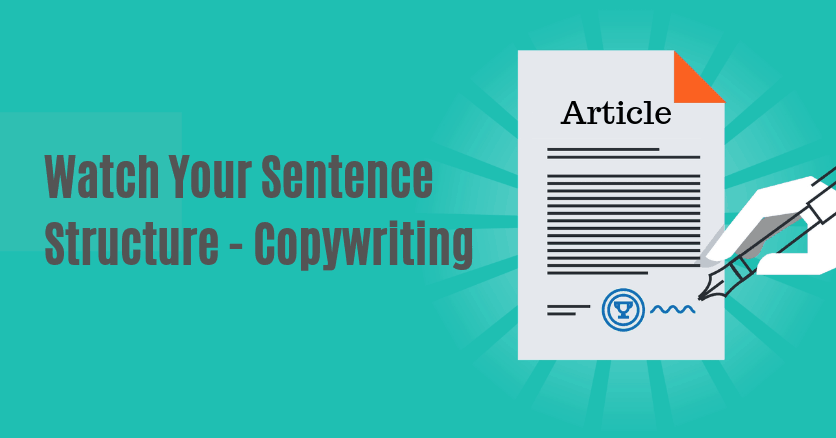
Write Sentences That Want To Be Read – Make sure your sentences are:
| Short Simple Focus on a single idea Answers, ‘why should I care?’ |
Assume They’re Sold – Write as if your reader is already an active user of your product or service:
| Not “You could get the whitest teeth you’ve had in 20 years.” but, “Your teeth are whiter and brighter than they have been in 20 years.” Not “If you begin using our product…” but, “When you begin using our product…” |
Write Using An Active Voice – Create sentences where the subject of the sentence is performing an action, not receiving an action. This style of writing creates a greater sense of action and motion, is easier to read, and usually requires fewer words to explain the same idea:
| Not “The car [subject] is being driven [receiving an action] by Bob” but, “Bob [subject] is driving [performing an action] the car” Not “The pencil [subject] was sharpened [receiving an action] by the student” but, “The student [subject] sharpened [performing an action] the pencil” |
Related Searches:
active voice and passive voice – Videos
writing in an active voice
Use The Bucket Brigade – Include a word or phrase at the end of one paragraph that motivates the reader to WANT to read the next paragraph; end your paragraphs with a cliffhanger:
| “More about that later…” “Here’s the deal…” “So let me ask you…” “What’s the catch?” “Just think that about that for a minute…” “Now picture this…” “Then it hit me…” “And that’s just the beginning…” |
Give Your Sentences Flow & Rhythm – When you end a sentence with an idea, make sure the sentence that follows it picks up on the previous idea immediately:
| “Do you like red sports cars? These kinds of cars get noticed and are a ton of fun to drive. There are very few things that are more fun than to go from 0-60 in 4 seconds flat! That kind of quickness easily gets addictive. That’s an addiction you can probably live with, right?” |
Use The Power Of 3 – The Power Of 3 refers to the technique of using three words, three phrases, or three sentences in a row, in order to emphasize an idea and make it memorable. It works because our minds are tuned to the rhythm of things that come in 3’s:
| “It’s as easy as 1-2-3” John Fitzgerald Kennedy (3 names) “Your dog will look better (1), feel better (2), and experience overall better health (3).” |
Use It Sparingly – Don’t overuse The Power Of 3 in your copy or it will become obvious, and less effective.
Give Away Value
Give Away Results First – When you can prove something to be true to your reader before they buy (in the form of a video tutorial, report, or series of strategies), they immediately gain confidence and trust in anything else you tell them.
Create A Sense Of Reciprocation – When you give something of value away to others for free, it creates a bond of reciprocation, where the receiver becomes more compelled to offer something of value back – usually in the form of cash through the purchase of one of your products or services.
Let Them Know You Want To Give Them Something Valuable – Use a headline that gets your reader to want to ‘learn’ from your page rather than prompting them to buy something.
Make It Something Awesome – Share with your reader one of your best secrets or techniques – something they can use immediately to see results.
Make A Damaging Confession
Appreciate The Power Of A Damaging Confession – Admitting a flaw of some sort conveys a sense of honesty about you in your reader’s mind because dishonest people don’t usually admit to doing dumb or bad things. When you make a damaging confession, you’re telling your reader that you’re no better than they are.
Share Your History – Tell them how you used to be, live, or work. Explain, in detail, the struggles you had, how you couldn’t seem to get things right, and how you failed along the way.
Be Honest – Always use a legitimate, honest goof. Don’t make one up!
Turn Your Confession Into Something Positive – Turn your damaging confession into a benefit. Explain what lesson you learned, or why it was a good thing that it happened.
Use Repetition, Repetition, Repetition
Get Results Through Repetition – Repetition plays a key role in training your brain to remember and believe something. Use this powerful tool in your copy.
Focus On A Single Idea – Determine the main idea you want to get across, and make that idea the focus of your repetition.
Use This Simple Repetition Formula – Tell them what you’re going to tell them, tell them, and then tell them what you told them.
Try Different Perspectives – Find captivating ways to make your point in various ways; by using a direct statement, by providing an example, through telling a story, visually, through a testimonial, and so on.
Keep It In Check – Don’t be overly repetitive to the point of being annoying.
Use Metaphors
Understand Why Metaphors Work – Metaphors help paint pictures in your reader’s mind. A great metaphor allows you to tie what you’re telling them with something they already know, understand, and believe:
| “Life is a roller coaster” “He was drowning in money” |
Avoid Cliches – A metaphor loses a lot of its effectiveness when it’s nothing more than a cliche. When tempted to use a metaphor like this, think about how you can put a new, original twist on an old favorite:
| “He was drowning in money” becomes, “He was consumed by an avalanche of cash” |
Use Metaphors To Clarify – There are few times when a good metaphor comes in more handy then when you need to explain something abstract, unfamiliar, or complex. As you write, think about any complex areas in your copy that could be enhanced by using a metaphor.
Go For Short And Simple – As with most elements of copy, the shorter and more concise you can make a metaphor, the greater the impact it will have.
Don’t Overuse Them – Use metaphors as much as you need them, but be careful not to stuff your copy with them because they’re fun and demonstrate your creativity with words. Use them purposefully.
Related Searches:
list of metaphors
metaphor examples
popular metaphors

Spend More Time Writing Copy That Gets Results, Less Time Learning How To!
Easy to learn, Easy to use, Able to produce dramatic results
Remove Resistance
Be Indirect – To neutralize resistance that most people have to a sales message, you must hand over control to them. Don’t attempt to shove your message down their throat, but make your sales points indirectly.
Encourage Lots Of Small Yeses – Subtly get your reader to answer ‘yes’ to simple statements and questions. These represent small, positive commitments in your readers minds – helps eliminate resistance and builds momentum to them saying ‘yes’ to your offer.
Provide Value Before Selling – Give the reader something of value – teach them something – before even mentioning your product.
Wait To Display A Product Image – Sometimes, an image of a product near the top of the page alerts the reader they’re about to be sold – it may increase resistance.
Eliminate Confusion – If at any step along the way of reading your copy the readers becomes confused, their resistance immediately gets stronger. You must keep your copy – from your headline to your order form – simple and easy to understand.
Back It Up – The more you can prove that what you’re saying is true (with facts, statistics, and testimonials), and that you know what you’re talking about (by your reputation, results, and credentials), the more your reader will trust what you tell them.
Make It Urgent – Using scarcity (deadlines for ordering, limited number of units, etc.) is one of the best, time-tested ways of moving people past any feeling of resistance into a state of taking action.
Answer Objections
Realize The Hidden Benefit Of Answering Objections – Answering objections actually gives the reader ammo for defending their decision to buy.
Eliminate Objections ASAP – By answering objections as soon as possible, you prevent doubt from festering in your reader’s mind. The longer an objection stays in your reader’s head, the more difficult it is to overcome.
Validate Their Feelings – Be sure to validate your reader’s skepticism: “You’re right to wonder if this is a bunch of hype.”
Provide An FAQ Section – Simply make a list of all the objections your reader might have, and answer them succinctly one-by-one, like a series of FAQ’s.
Related Searches:
create an faq page
Tell Them What It’s Not – Figure out all the negative things your reader might ‘think’ your product requires from them, then tell them it has nothing to do with those (include images with X’s through them for bonus points):
| It’s NOT about selling to your friends and family It’s NOT about calling strangers It’s NOT about buying an inventory of products. |
Tell Them Who’s Benefiting From It Now – To answer the common objection that people hear in their head, ‘Is it for me?’, answer with a breakdown of: Who loves/uses/relies on this product or service? For example, when writing about a course to stop a dog from barking, you would say:
| Who uses the Bark-Stop program? 1. Homeowners who are embarrassed that their pet is keeping their neighbors awake at night 2. Dog owners who are frustrated that having a peaceful, quiet evening at home is next to impossible 3. Parents who want a calm pet for their kids to play with without fear |
Remember To Address These Common Objections – The following list of objections are fairly common, no matter what your product is. Be sure your copy answers them:
| I don’t have enough time; I’m in no hurry to act – Demonstrate how easy it is to use, or do, maybe with a demo video. Explain to them clearly how much time they’ll actually save. It’s too much money; I don’t have any money – Show the reader what it will cost if they don’t act. Or, show them the cost of other solutions (your competitor’s products) that aren’t as effective. It’s similar to something they already have; I have no need for it – Create a comparison chart and compare your product to commonly used competing products and show how your product is different and better. I have no interest in it; I don’t think it’s for me – Remind them they won’t know for sure until they try it, which they can do, risk-free, due to your fantastic money-back guarantee! You’ve given me no proof that what you’re saying is true; I don’t trust you – Offer case studies, testimonials, facts and statistics from reliable sources. |
Related Searches:
comparison chart – Images
how to create a comparison chart – Videos
Show, Don’t Just Tell
Back Up What You’re Saying – Case studies, links to relevant articles, testimonials, and stories can all be effective ways to show, and not just tell.
Include Lots Of Details – Including plenty of details in your copy is like adding focus. Details help the reader see something vividly and clearly so that it becomes more real in their minds.
Use Images – Display pictures of specific results that customers have achieved. Before and after photos work especially well.
Use Video – Use video to show how easy something is to use, or how quickly results are produced.
Ask Questions
Understand Why Questions Are So Powerful – Asking good questions in your copy:
| Stimulates the reader’s thinking, and gets them more emotionally involved in what you’re saying. Causes the reader to convince themselves something is true, instead of you simply making a statement, expecting them to believe it as true. Leads your reader in a direction you want them to follow. Solicits a response in your reader’s mind, whether they know it or not. It’s almost reflexive. They may not answer out loud, but they do in their mind. Opens a ‘loop’ in the reader’s brain that can only be closed by finding the answer. If left open, the person begins to feel a form of mental (and sometimes even physical) discomfort. |
Value The Reader’s Opinion – Ask questions that show the reader you value their opinion: ‘How would you…?’, or ‘What sounds more reasonable…?’
Ask Thought-Provoking Questions – Use questions that arouse the reader’s curiosity and gets them to think:
| “How Did I Turn A $10 Website Into An Online Empire?” “How Do You Know For Sure When Somebody is Lying To You?” |
Remind Them Of Their Pain – Ask questions that appeal to a pain:
| “Are You Making These Kinds Of Mistakes With Your New Puppy?” “Is All That ‘Fat’ Food That You Can’t Stop Eating Putting You On A Guilt-Train You Desperately Want To Get Off?” |
Go For A ‘Yes!’ – Ask leading questions that require positive, ‘yes’ answers:
| “Could you use more time?” “Are you frustrated that you work hard all day and have very little to show for it?” “Do you feel frustrated and overwhelmed?” |
Always Provide The Answer – When you ask a question, answer it soon afterward. Don’t leave your reader hanging, without an answer – it’ll break any concentration they have for reading your copy until they get an answer.
Watch The Length Of Your Copy
Write With Purpose In Mind, Not Length – Write just enough copy to get your point across effectively – no more, no less.
Always Test Your Results – There’s no single answer to every question regarding the length of your copy. As with most things related to copywriting, always test!
Long Copy
Understand The Benefits Of Long Copy – Writing long copy:
| Gives you more opportunities to persuade the reader. Appeals to both those who want to skim and those who want all their questions answered. Usually helps your page rank better on search engines. Tends to give the reader the impression that there must be something valuable about your offer if there’s so much information about it (even if they don’t read it all). Helps you master the art of copywriting more quickly. |
Know When To Use Long Copy – Long copy is usually best when:
| You’re selling a high-priced product (more than $200.00). A buying decision is based more on emotion (a course on running a home-based business) than practicality (a new pair of glasses). Your product is ground-breaking, thus needs to be explained in greater detail Your target market is unfamiliar with you or your product, and are likely to have a lot of questions that need answered. |
Short Copy
Understand The Benefits Of Short Copy – Writing short copy:
| Makes your sales page look less like the ‘hypey’ long sales pages people are familiar with. Motivates you to make better use of testimonials, bullets, audio, and video content. May appeal to your market if they are known for being strapped for time (working mothers, time-management fans, etc.). |
Know When To Use Short Copy – Short copy is usually best when:
| You’re product is inexpensive or free. You have a rock-solid reputation with your market of consistently delivering high-quality products. Everybody wants what you’re selling. |
Use Simplicity
Get To The Point Quickly – Make sure it takes no more than 3-5 seconds to understand a point you make in your copy.
Edit For Simplicity – Keep these elements simple:
| Headlines and subheadlines – The shorter, the better Words – Use words with similar meanings but fewer syllables Sentences – Keep sentences short and free of unnecessary words Design – Use just a few different colors, fonts, plenty of white space, and a simple page background |
Study Twitter Posts – Twitter (www.twitter.com) is a site that allows people to share their thoughts in 140 characters or less. It’s a writing environment that requires simple, brief statements. Study some of the top posters to learn how they effectively get their thoughts across in a simple way.
Related Searches:
top tweeters
In A Nutshell: Things Your Copy Must Do!
Your copy must:
Grab attention
Focus on a single idea
Be easy to scan
Answer ‘why’, and ‘what’s in it for me?’
Establish credibility and build trust in what you’re saying
Emphasize benefits, not features
Clearly explain the uniqueness of the product – your USP (Unique Selling Proposition)
Be written conversationally, using words and terms your reader is familiar with
Address objections
Provide a simple, clear message
Convey massive value
Reach the reader on an emotional level
Create a sense of urgency
Tell the reader what to do next
Make it easy for them to take action


